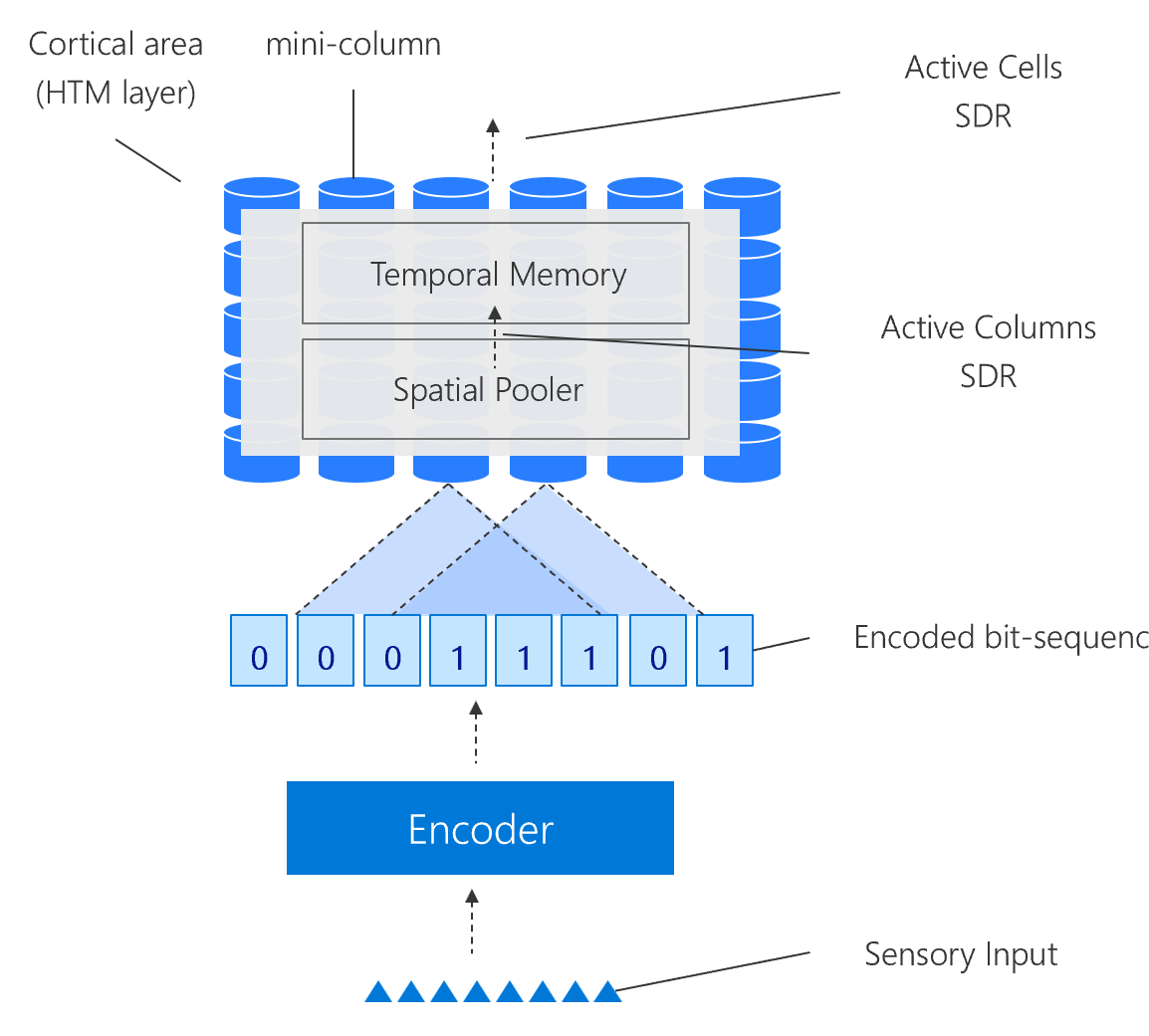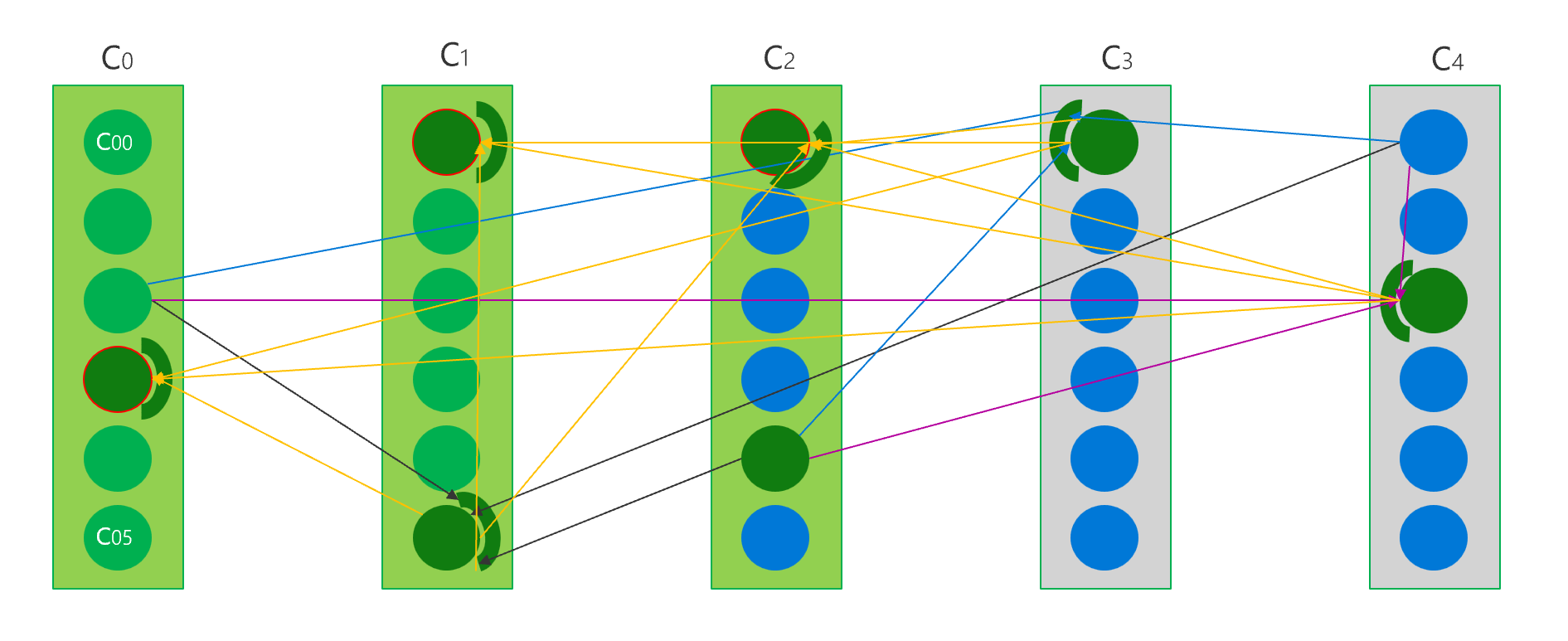Getting Started
The Hierarchical Temporal Memory Cortical Learning Algorithm (HTM CLA) is a theory and machine learning
technology that aims to capture cortical algorithm of the neocortex. HTM consists of 2 different
components: Spatial Pooler and Temporal Memory. Inside the algorithms, there are multiple mini columns
act as synapses in our brain. These columns will be activated or deactivated depend on the input that is
given. This is similar to the synapse activity. HTM, like many other machine learning algorithm, only
deals with number. Therefore, it requires an encoder to transform the real world concept into digitized
world of '0's and '1's.





